By Larry Zabel Sgt. US Army Infantry (Ret)
This is my first article to MilSim Magazine and I just wanted to use this article to of introduce myself and who I am as a martial arts instructor/self defense teacher and where I’m at on my own martial arts journey. I took a moment to reflect on the long history of martial arts study I’ve taken (now 36 years +) and stopped to consider all the techniques taught to me by my teachers, taught to them and so on. What struck me is the universal notion that it all works.
In academic terms, yes it all works. In practical terms not so much, some things that might work for one person, may not work for someone else. Not everyone has the skill, coordination, body type, flexibility, dedication, ability or even interest in learning an entire curriculum. Even if a student spends years studying and learning an entire schools curriculum there are a certain set of techniques, concepts and principals that student and teacher will gravitate towards because of that person’s physical body makeup and natural tendencies. In other words Bruce Lee has been famously quoted, “Absorb what is useful, discard what is useless and add what is specifically your own”. To that adage I add, “Know when to break the rules altogether!” That last part I added on my own and it has been my martial mantra for more than two decades.
I remember doing countless drills of kicks and punches in the air and for what? Muscle memory? Wrote learning? Historical preservation? Moving meditation? Perhaps. When I joined the Army and was an infantryman my martial arts philosophy permanently changed. Now, as a teacher I look at things differently. Curriculum, class structure, live action scenario training, interactive drills, coordination exercises, If they aren’t effective I don’t do it and I won’t teach it. Even terminology. I used to be pretty good at spiting out the names of techniques in a foreign language and the students looking at me funny. Not anymore, unless it’s is quick concept not easily explained in English.
Let’s take kicking for example. We can all agree that the artistry required to be effective at kicking is demanding, precise, powerful and lethal in the right circumstance and application. It takes years to develop the strength stamina and precision to be an effective kicking machine, so to speak. So, what about the ordinary person who works a 40 hour job, has a family and doesn’t dedicate his every waking breath to the study and preservation of martial knowledge?
Here is where we get to the nitty gritty of my premise “Know when to break the rules altogether” is applied. In America today we are flooded with images of exceptional martial athletes doing death defying stunts or competing in the MMA Arena. Neither is going to work for the average man or woman out there interested in self defense. I no longer teach every kicking technique because in practical terms there are only 3 that actually get the job done with minimal time invested, skill development and limited flexibility the average student can pull off if ever needed. Front kick, Cross Checking Kick, and Low to Mid Level Round Kicks. I do still teach crescent kicks, side kicks, hook kicks, spinning kicks and they’re variants but they require time and technique development outside of safe usage for a beginner. I personally no longer actively practice the “fancy” kicks because in a self defense scenario it just wouldn’t be practical. Is there a legitimate place for these techniques and preservation? Absolutely!
Back to my ongoing point. Once you analyze the motions you realize they are not overly complicated, require no extra special balancing, or even above average flexibility. However, each one can deliver powerful debilitating blows in a defensive posture or finishing techniques in an attacking mode. The point I’m making is that we as “Instructors” have to put ourselves into our students lives momentarily and understand the daily stresses they’re dealing with and deliver fast effective solutions to potential problems everyday life may throw at them. If you have a student whose main goal is to defend themselves and leave after six months (if that) then adjusting your teaching method to help that student could be a winning strategy.
There is also a different breed of student that this practical training philosophy I have applies. The “Tactical Professional” can ill-afford years of dedicated training nowadays with the amount of time away on deployment or in the streets on patrol. They need our deepest knowledge, best concepts, and training applications in a short amount of time. They need all of this in order to be well rounded, mission ready, and qualified for the battle on patrol, active watch, downrange or in the field.
These professionals have to understand what works quickly and effectively with minimal time invested. With limited time for skill development and minimal flexibility because of the time constraints, we need to prepare our students for mission readiness schedules, environmental variables, protective gear, movement in close quarters, mission essentials, and weapons carried. The curriculum must be simple, effective and lethal to the enemy. It should also be demoralizing to the suspect and debilitating for those captured for questioning or intelligence gathering. All must hasten the stop of the fight and mitigate injury to the professional user.
My point about kicking earlier in this article takes on a different premise here. In tactical situations with full kit, weapons, and restrictive/hostile environments being strong influencing variables, heavy adrenaline flow will be produced and the premise for kicking effectively will be limited to simple, effective, and fast (gross motor movement). The way the body moves in a combat situation with heavy gear is different than how the body moves unencumbered out on the streets. The overall premise still applies, but the reasons for it are different and the way it is trained changes as well. Understanding operational conditions impacts the training environment, what is trained, why and how training is conceived and implemented. Understanding and being able to deliver effectively takes on new purpose with lives at stake, so the responsibility as an instructor takes on new levels of meaning, purpose, and accountability.
There are always going to be the dedicated students that you throw all your knowledge, heart and soul into. For the students that don’t have that time, dedication, and drive, this might be a prudent way to teach those folks who need it quick and dirty without sacrificing knowledge, skill, your integrity or their personal safety. For the tactical professional among your student base this training philosophy is especially critical for them because they are putting their life on the line with the knowledge you posses and disseminate.
These areas of tactical applications, principals, and concepts are what I will be focusing on here at MilSim Magazine. I hope you enjoy and learn from it. I know I will.
Train Right. Train Smart.

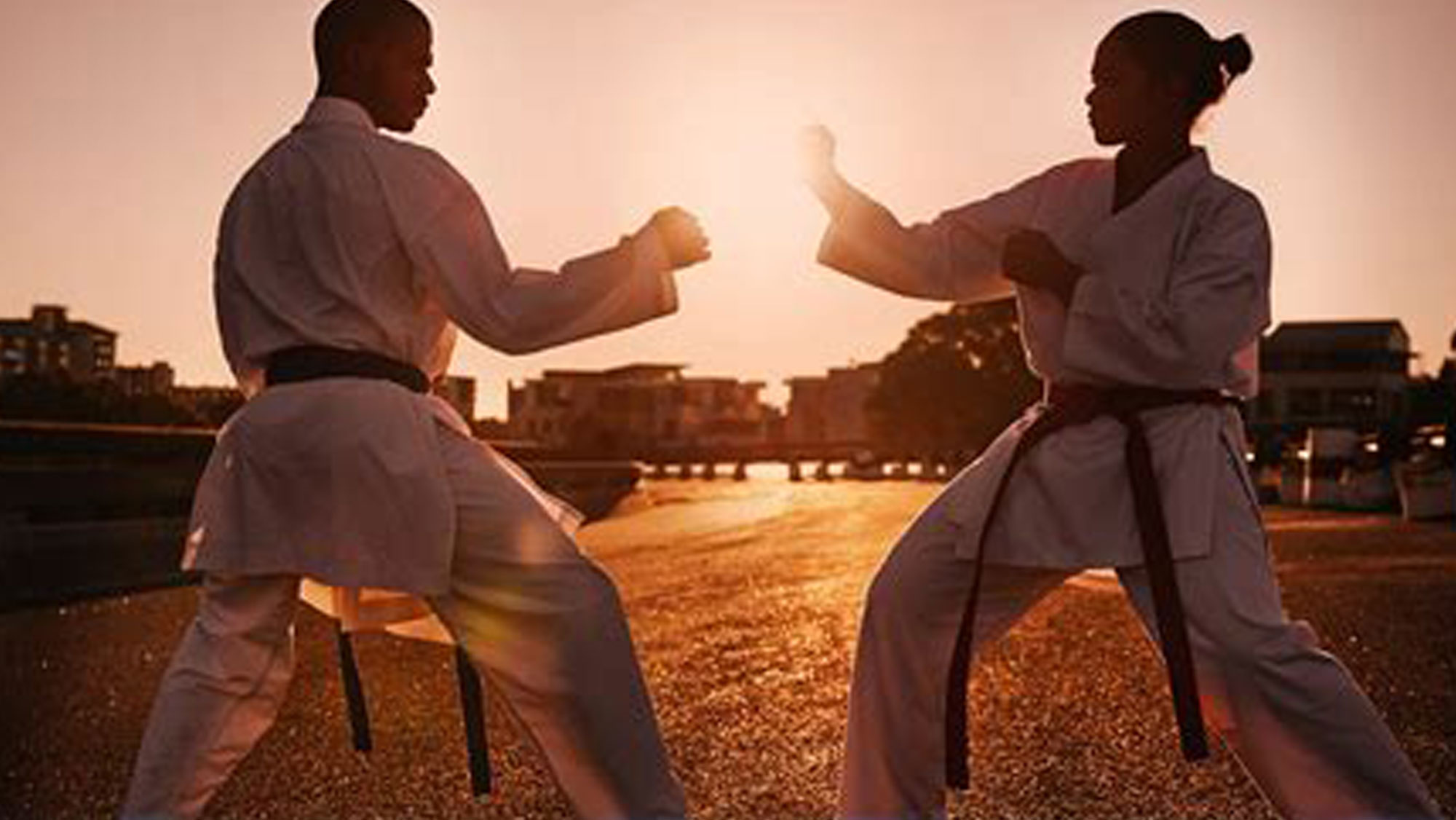
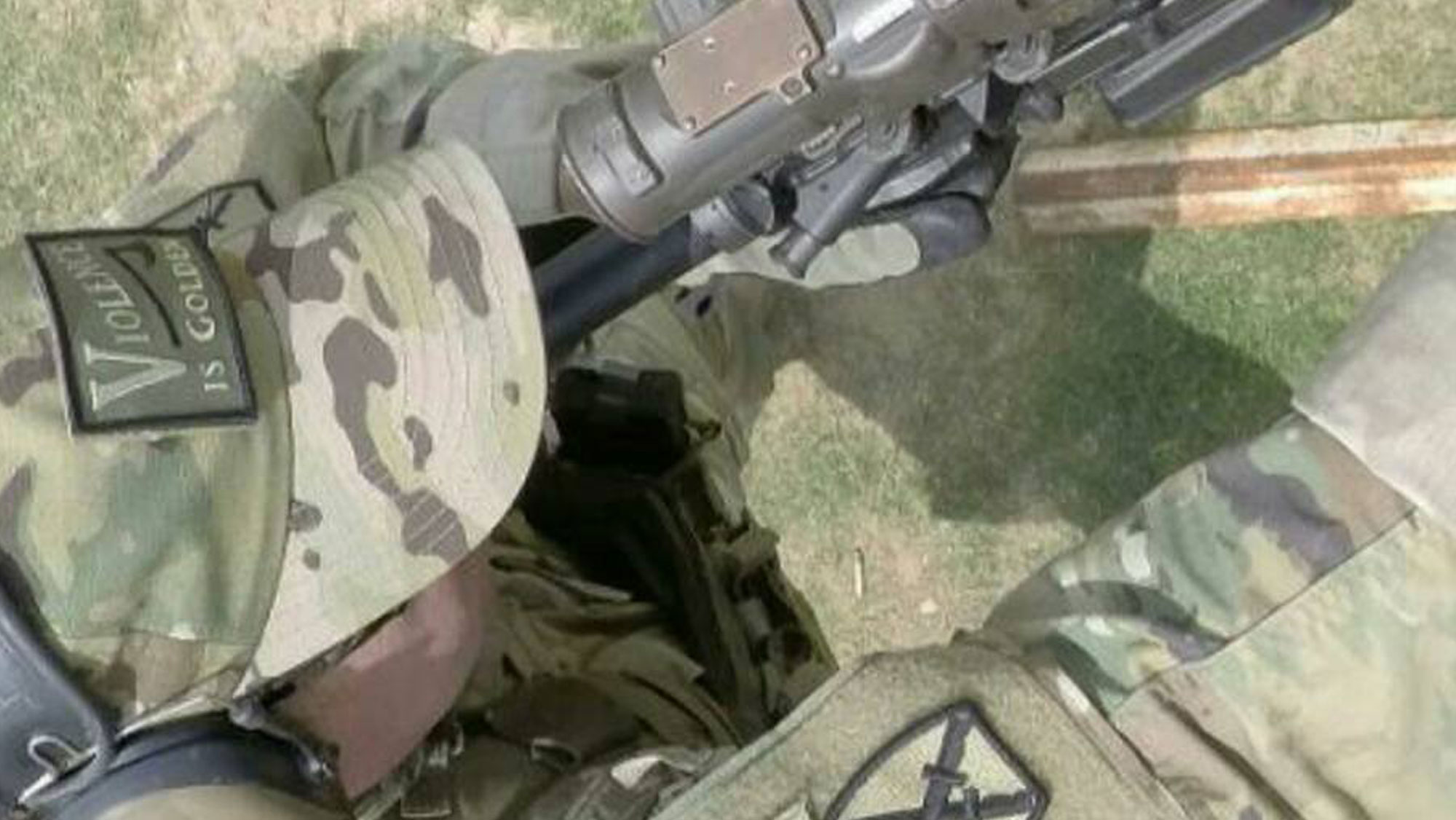
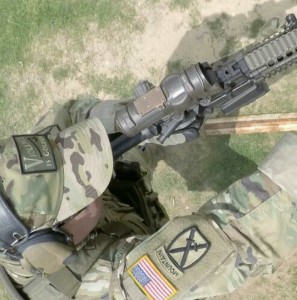
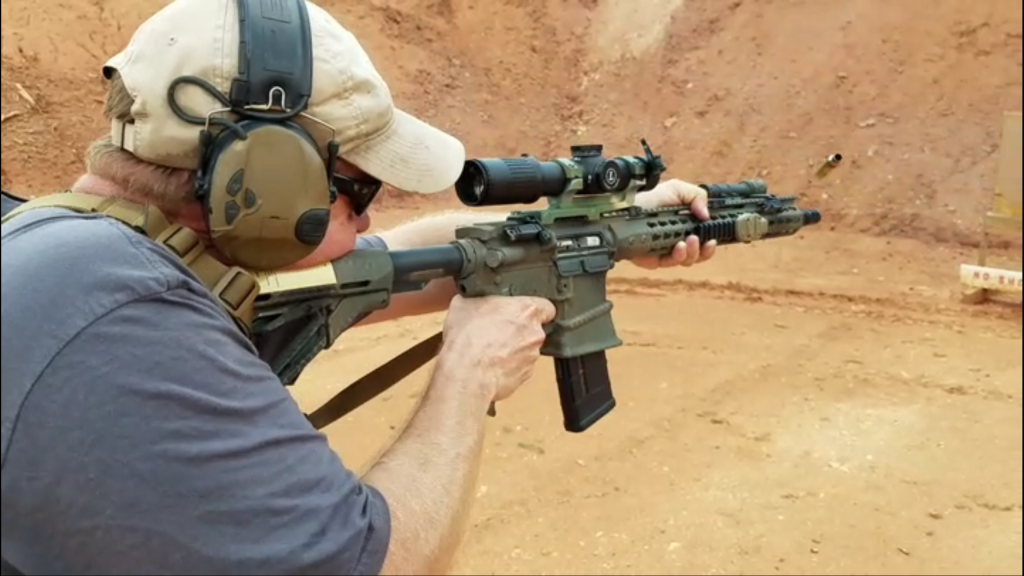
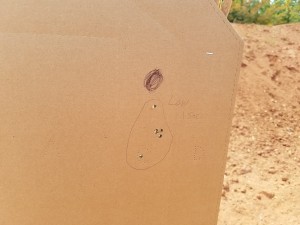
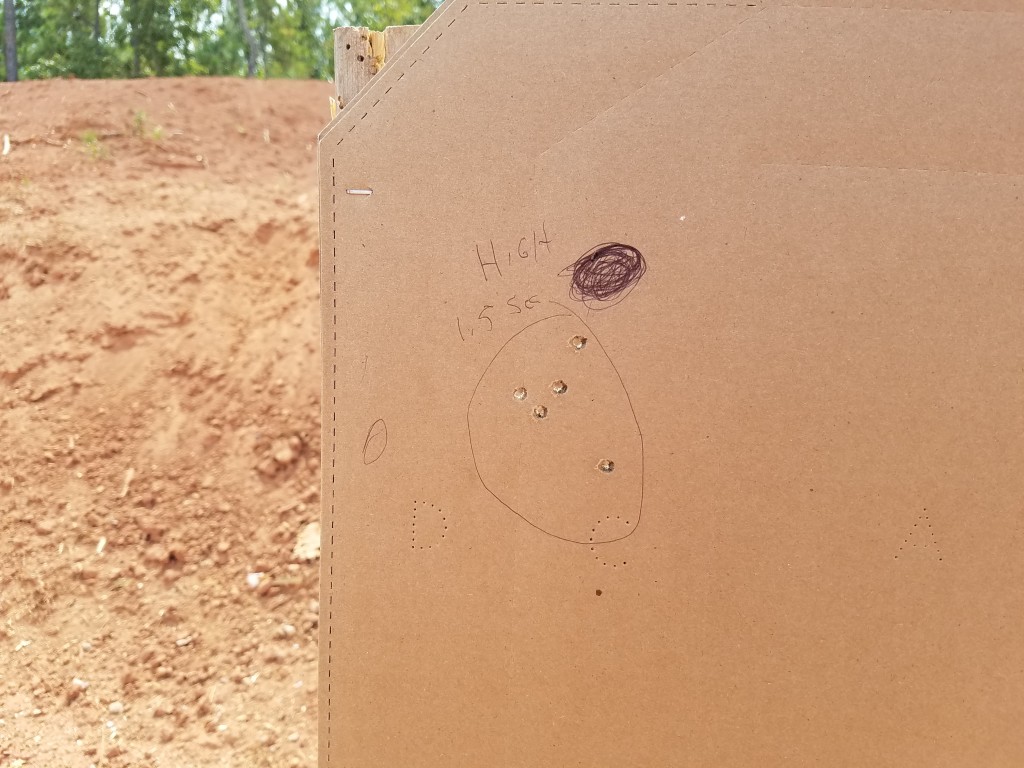
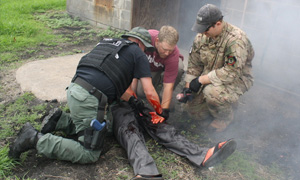
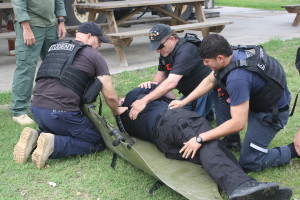 Recently, I was invited to take a TCCC course with the guys at Tactical Medics Group (www.tacmedgroup.com). So my photographer and I decided to make the 19 hour drive to check it out. The journey itself was enough to write about. However, we managed to make it to the course on time. The course was held at the Brazoria County Fire Fighting Field so there were plenty of places to run scenarios. Of course, it isn’t a medical course unless you have some death by PowerPoint. However, the classrooms had plenty space and the instructors kept the interest up. It was really the first time I didn’t feel like falling into a PowerPoint coma.
Recently, I was invited to take a TCCC course with the guys at Tactical Medics Group (www.tacmedgroup.com). So my photographer and I decided to make the 19 hour drive to check it out. The journey itself was enough to write about. However, we managed to make it to the course on time. The course was held at the Brazoria County Fire Fighting Field so there were plenty of places to run scenarios. Of course, it isn’t a medical course unless you have some death by PowerPoint. However, the classrooms had plenty space and the instructors kept the interest up. It was really the first time I didn’t feel like falling into a PowerPoint coma.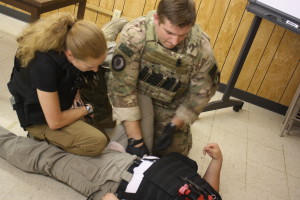 Nate, the lead instructor had a strong presence and had no problems keeping the class engaged while keeping his Marine Corps non politically correct qualities at bay. That itself made for a great time. Then entered Jared, the Army’s contribution to our TCCC course, as a former medic with the 75th Ranger Regiment, he also brought a wealth of combat experience to the course. Kenny was the backbone of the course. Without his mad computer skills all could have been lost. There wasn’t too much sarcasm in that last statement was there? Kenny, also from the Army Special Operations world, was a wealth of knowledge as well and a good sport I might add. Shawn with his background in SWAT and a decked out police issue Charger and finally Andrew great sense of humor and background as an Army Combat Medic rounded out the group. I was impressed by how well such an extremely diverse group of alphas personalities could work so well together.
Nate, the lead instructor had a strong presence and had no problems keeping the class engaged while keeping his Marine Corps non politically correct qualities at bay. That itself made for a great time. Then entered Jared, the Army’s contribution to our TCCC course, as a former medic with the 75th Ranger Regiment, he also brought a wealth of combat experience to the course. Kenny was the backbone of the course. Without his mad computer skills all could have been lost. There wasn’t too much sarcasm in that last statement was there? Kenny, also from the Army Special Operations world, was a wealth of knowledge as well and a good sport I might add. Shawn with his background in SWAT and a decked out police issue Charger and finally Andrew great sense of humor and background as an Army Combat Medic rounded out the group. I was impressed by how well such an extremely diverse group of alphas personalities could work so well together.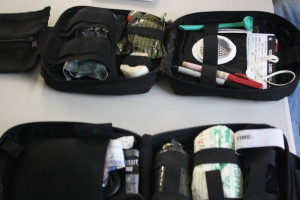 Not only does Tactical Medics Group teach courses but they also develop various IFAK kits available for purchase. They even have the Ambidextrous Tourniquet Attachment Kydex (ATAK), a great device for carrying a tourniquet on your gear. Every student was given one to use during the course. To be honest, I would have bet that it would have come out. But it never did. You can check them out here at www.AtakTQholder.com. I’m still not 100% convinced but I am impressed and appreciated the fact that they asked for honest feedback and ideas so that they can improve on it.
Not only does Tactical Medics Group teach courses but they also develop various IFAK kits available for purchase. They even have the Ambidextrous Tourniquet Attachment Kydex (ATAK), a great device for carrying a tourniquet on your gear. Every student was given one to use during the course. To be honest, I would have bet that it would have come out. But it never did. You can check them out here at www.AtakTQholder.com. I’m still not 100% convinced but I am impressed and appreciated the fact that they asked for honest feedback and ideas so that they can improve on it.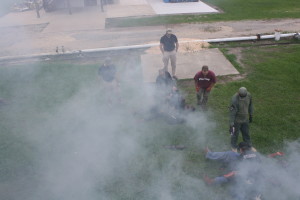 Tactical Medics Group was started in 2012 by Terry Moore, a veteran of the Australian military with backgrounds in tactical medicine and personal security details with a resume longer than this article. Although, he was overseas on a contract, we spent some time talking about the course. It was easy to tell that Terry has a strong focus on offering the best training possible to his students. And he takes it extremely personally if his instructors are not at the top of their game. To this end Terry will only hire good instructors with strong field experience, which is an extremely rare combination. We all know that there is always room for improvement and Terry doesn’t seem like one to ignore that fact. I was impressed that after seeing some of the pictures from the course he noticed areas that could use improvement.
Tactical Medics Group was started in 2012 by Terry Moore, a veteran of the Australian military with backgrounds in tactical medicine and personal security details with a resume longer than this article. Although, he was overseas on a contract, we spent some time talking about the course. It was easy to tell that Terry has a strong focus on offering the best training possible to his students. And he takes it extremely personally if his instructors are not at the top of their game. To this end Terry will only hire good instructors with strong field experience, which is an extremely rare combination. We all know that there is always room for improvement and Terry doesn’t seem like one to ignore that fact. I was impressed that after seeing some of the pictures from the course he noticed areas that could use improvement.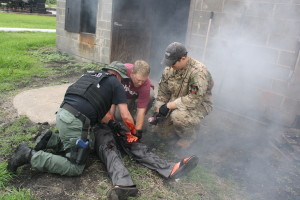 Until 2005 when USSOCOM changed their approach to combat medicine, the military had not made any major changes to their approach to combat casualty care since WWI. These changes came about from a paper complied in 1996 and put to the test by Pararescue units in 1997. Soon after some heavy hitters like the American College of Surgeons (ACS), the Council of Trauma (COT), and the National Association of Emergency Medicine (NAEMT) indorsed the new guidelines that we now know as Tactical Combat Casualty Care (TCCC).
Until 2005 when USSOCOM changed their approach to combat medicine, the military had not made any major changes to their approach to combat casualty care since WWI. These changes came about from a paper complied in 1996 and put to the test by Pararescue units in 1997. Soon after some heavy hitters like the American College of Surgeons (ACS), the Council of Trauma (COT), and the National Association of Emergency Medicine (NAEMT) indorsed the new guidelines that we now know as Tactical Combat Casualty Care (TCCC).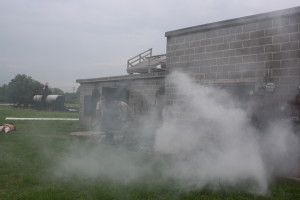 In order to support the mission TCCC is broken up into three phases. These phases focus on offering the best medicine possible at the right time in a hostile environment. Timing is everything. Trying to start an IV while in the open under direct fire is pointless and suicidal at best. The best medicine at the wrong time will increase injuries and risk the success of the mission. So let’s take a look at the phases:
In order to support the mission TCCC is broken up into three phases. These phases focus on offering the best medicine possible at the right time in a hostile environment. Timing is everything. Trying to start an IV while in the open under direct fire is pointless and suicidal at best. The best medicine at the wrong time will increase injuries and risk the success of the mission. So let’s take a look at the phases: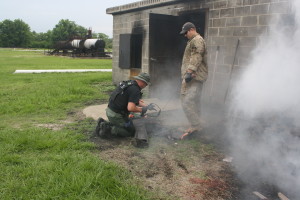 Tactical Field Care – Once the soldier is out of direct fire then basic life support (BLS) begins. Once major bleeding is controlled then basic airway management takes over along with continued patient assessment including any other basic interventions. If evacuation is delayed then Advance Life Support (ALS) may begin. Keep in mind that the concept here is just because you have it doesn’t mean you have to use it. If you can maintain an open airway manually using a jaw thrust maneuver then do you really need to intubate? If evacuation is delayed you may want to consider moving to intubation if needed, but if evacuation is nearby then you may be able to wait. Just remember you have to carry it to use it. So how much do you really need to carry?
Tactical Field Care – Once the soldier is out of direct fire then basic life support (BLS) begins. Once major bleeding is controlled then basic airway management takes over along with continued patient assessment including any other basic interventions. If evacuation is delayed then Advance Life Support (ALS) may begin. Keep in mind that the concept here is just because you have it doesn’t mean you have to use it. If you can maintain an open airway manually using a jaw thrust maneuver then do you really need to intubate? If evacuation is delayed you may want to consider moving to intubation if needed, but if evacuation is nearby then you may be able to wait. Just remember you have to carry it to use it. So how much do you really need to carry?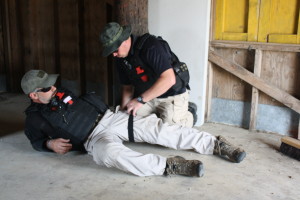 Another returning star to the stage of combat medicine is the tourniquet. Tourniquets have been shunned for decades due to various misconceptions. The emerging procedure is doing what is takes to control massive bleeding. If that means you drop a knee on the femoral artery of a soldier with a massive leg wound while applying a tourniquet or two side by side then using direct pressure and a pressure dressing to control the bleeding then so be it. Tourniquets have proven to not only save lives but the limbs as well. Studies of combat medicine have shown that no one has died or lost a limb from a properly placed and monitored tourniquet.
Another returning star to the stage of combat medicine is the tourniquet. Tourniquets have been shunned for decades due to various misconceptions. The emerging procedure is doing what is takes to control massive bleeding. If that means you drop a knee on the femoral artery of a soldier with a massive leg wound while applying a tourniquet or two side by side then using direct pressure and a pressure dressing to control the bleeding then so be it. Tourniquets have proven to not only save lives but the limbs as well. Studies of combat medicine have shown that no one has died or lost a limb from a properly placed and monitored tourniquet.